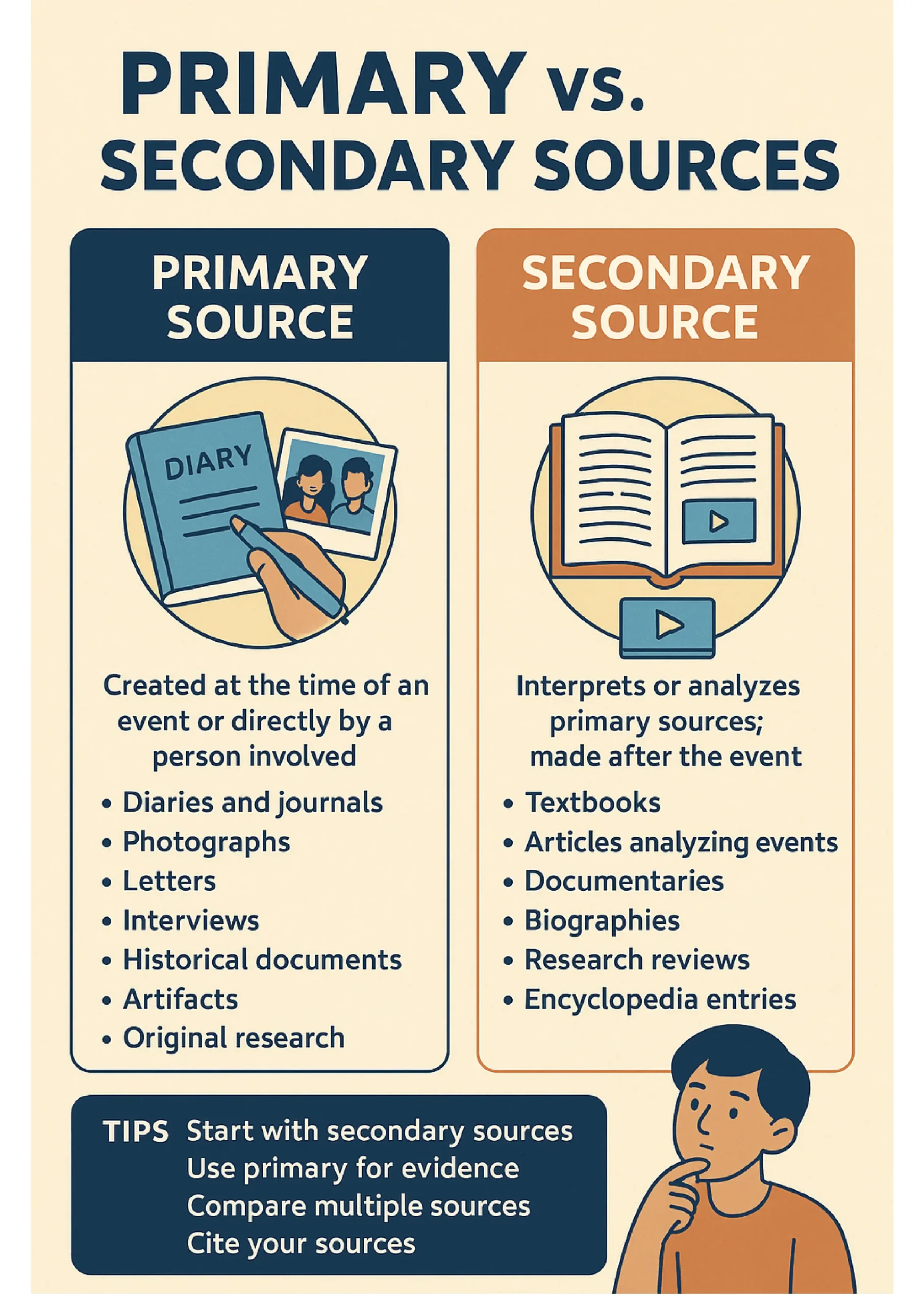Understanding the difference between primary and secondary sources is essential for school projects, essays, historical research, and science investigations. Teachers often ask students to use both types of sources, but many learners still feel confused about what each one means. This guide breaks down the difference in a simple, student-friendly way. Many students also organize downloaded source PDFs and research documents using PDFmigo.com.
What Are Primary Sources?
A primary source is an original, firsthand record created at the time an event happened or by a person directly involved in the event. It provides raw, unfiltered information.
Examples of Primary Sources
- Diaries and journals
- Photographs and videos
- Letters or emails
- Interviews and speeches
- Historical documents (e.g., Constitution, treaties)
- Scientific data and lab results
- Artifacts such as clothing, tools, or artwork
- Original research studies
Example: A diary entry written by a soldier during World War II is a primary source.
What Are Secondary Sources?
A secondary source analyzes, interprets, or summarizes primary sources. These sources are created after the event, often by people who were not directly involved.
Examples of Secondary Sources
- Textbooks
- Articles analyzing historical events
- Documentaries
- Biographies
- Research reviews
- Encyclopedia entries
Example: A YouTube video explaining how World War II started is a secondary source.
How to Tell Them Apart
Sometimes it can be tricky to know which is which. Here are quick questions to ask:
- Was it created during the event or by someone directly involved? → Primary
- Does it interpret or explain the event after it happened? → Secondary
- Does it present original data, results, or firsthand evidence? → Primary
- Does it summarize or discuss information from other sources? → Secondary
Why Both Types of Sources Matter
Using both types of sources helps students:
- Understand facts (primary)
- Gain context and explanation (secondary)
- Analyze information more deeply
- Create stronger school essays and research projects
How Students Use Primary Sources in Class
Primary sources allow you to study history, science, or literature in the most authentic way. You might:
- Read letters written by historical figures
- Analyze old newspaper articles
- Examine original scientific data
- Study maps, photos, or documents
How Students Use Secondary Sources
Secondary sources help provide background and context. For example:
- A textbook explains the causes of the Civil War
- A biography describes a scientist’s life
- A research review summarizes many older studies
Organizing Your Research Sources
When gathering digital documents such as PDFs, photos, and research notes, organization is essential. Students often combine their primary-source images, secondary-source summaries, and project notes using tools like Merge PDF to create a clean research packet.
Tips for Using Primary and Secondary Sources Together
- Start with secondary sources to understand the topic
- Use primary sources to gather firsthand evidence
- Compare multiple sources to avoid bias
- Always cite where your information came from
Staying Organized for Big Research Projects
Large school assignments often require many sources. Keeping them organized can save time and make your writing more accurate. Many students store all source PDFs in one folder and combine their notes and summaries using tools available at PDFmigo.com.
Final Thoughts
Primary and secondary sources each play an important role in learning. Primary sources give you firsthand evidence, while secondary sources help you understand and interpret that evidence. When used together, they make your essays, history projects, and science research much stronger. With practice, identifying the difference becomes quick and easy.





